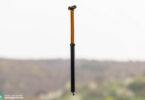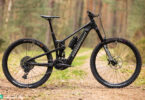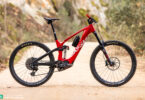Every day, customers flock into bike shops seeking more information about the new range – there aren’t currently many topics in the bike world more hotly anticipated than the new Haibike FLYON bikes. But what has sparked this fascination?
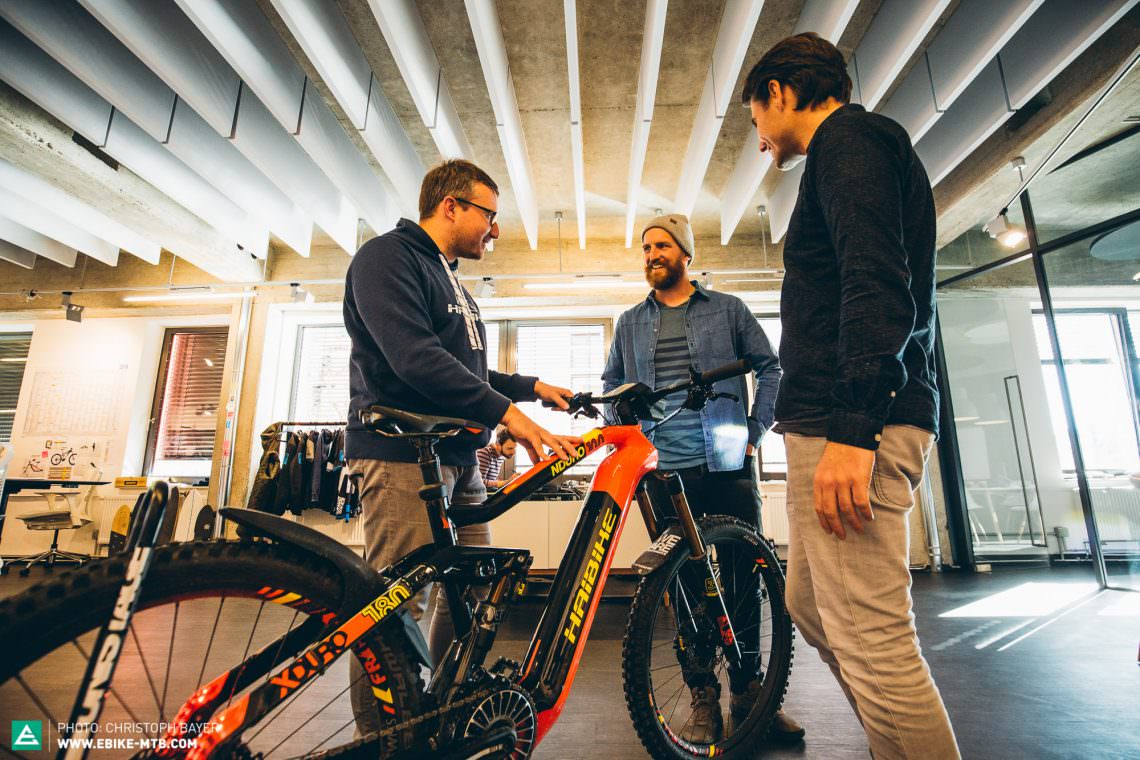
On his first day at Haibike in 2016, Piers Spencer-Phillips, now Head of CTG (Color Trim and Graphics) and Communication Design, asked himself a seemingly insignificant question. “Why does it say Bosch or Shimano when I turn on the bike? Why not Haibike?” It may sound like a banality, but when you turn on a BMW, you don’t see the names of their suppliers on the display. However, up until recently, that was the nature of the bicycle industry and it was relatively easy for companies to develop a bicycle – all it took was a frame. The components came from suppliers and simply got fitted and tuned accordingly. This has been no different with eMTBs, but instead of the usual drivetrain, suspension fork, brakes and other components, the motor, battery and display also make up an essential part of this modular system.
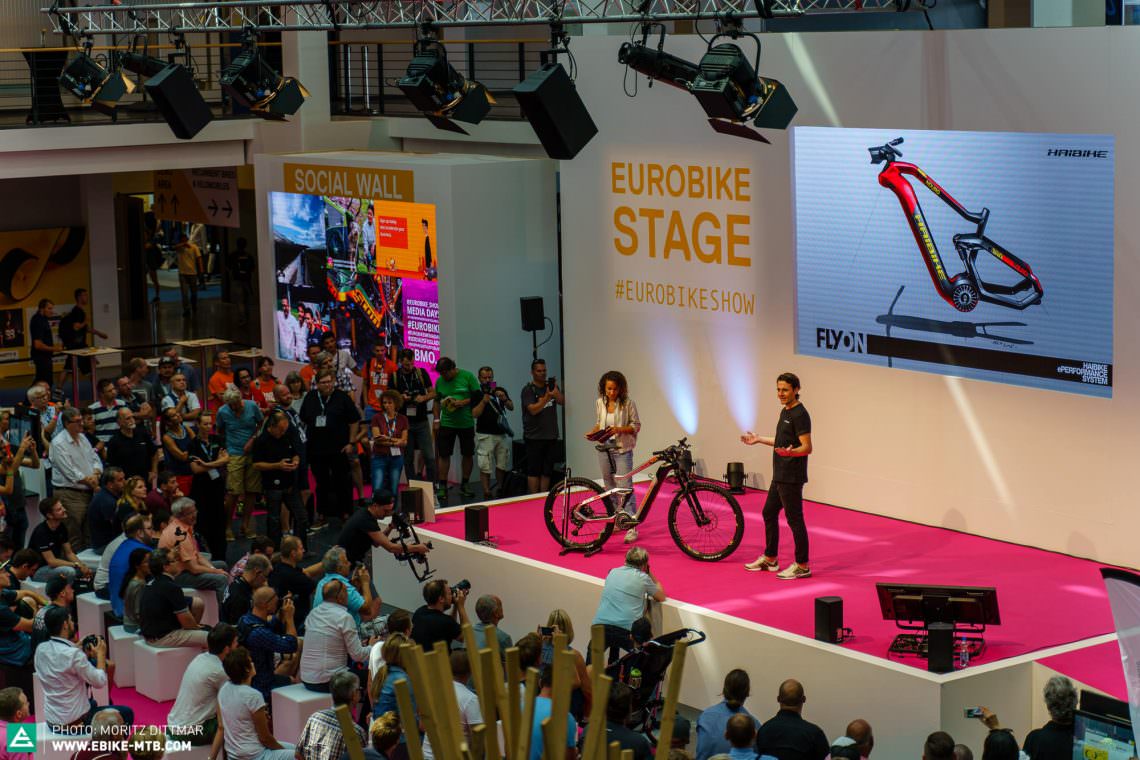
Haibike have taken a different approach with their new FLYON range. During our visit to Haibike’s headquarters in Munich, Ingo Beutner, Head of Engineering, explained: “FLYON means 100% Haibike.” The product development focused on the complete system, rethinking core principles such as usability, connectivity and design. While most traditional mountain bike manufacturers have jumped on the eMTB bandwagon, Haibike put ebikes at the forefront of their lineup, with only a very few non-powered low-end models. Haibike see themselves as an ebike brand first and that has had an influence on their approach to new projects, as the FLYON range proves.
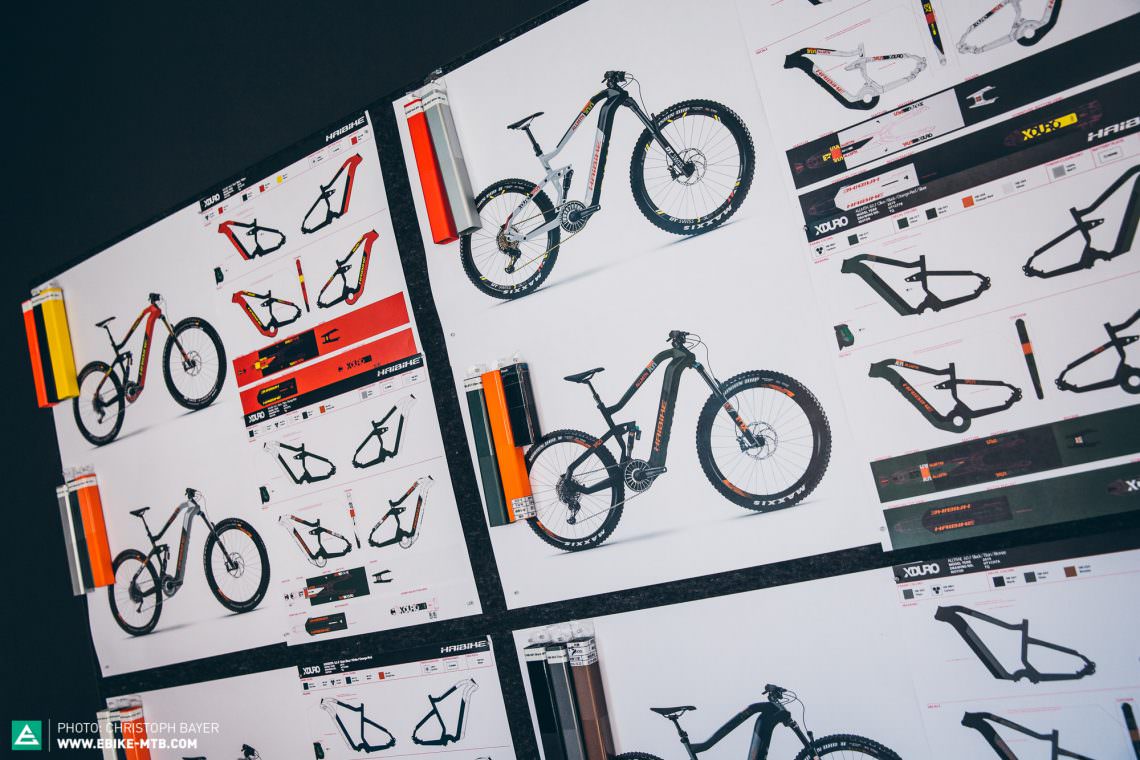
The Blue Ocean Strategy
So far, eMTBs have all been very similar, with most manufacturers basing their designs on non-motorised mountain bikes. You get the most recognition from consumers and from the industry if an eMTB handles as naturally as possible i.e. similarly to an “un-motorised” bike. In this segment, the power of the motor is secondary and power alone is never communicated as a real advantage – and this is exactly where almost all manufacturers compete with each other. The economists Renée Mauborgne and W. Chan Kim have developed a method of designing profitable business models: the Blue Ocean Strategy. According to this concept, the classic ebike market with its quest for “non-motorised” handling would be considered a red, bloody shark tank, where there is so much competition that you’ll be eaten alive. Instead, with the new FLYON range, Haibike have set sail for a clear blue ocean where there is little to no competition. Here they aim to make a name for themselves with their design, motor performance, riding experience, connectivity, integration and overall usability.
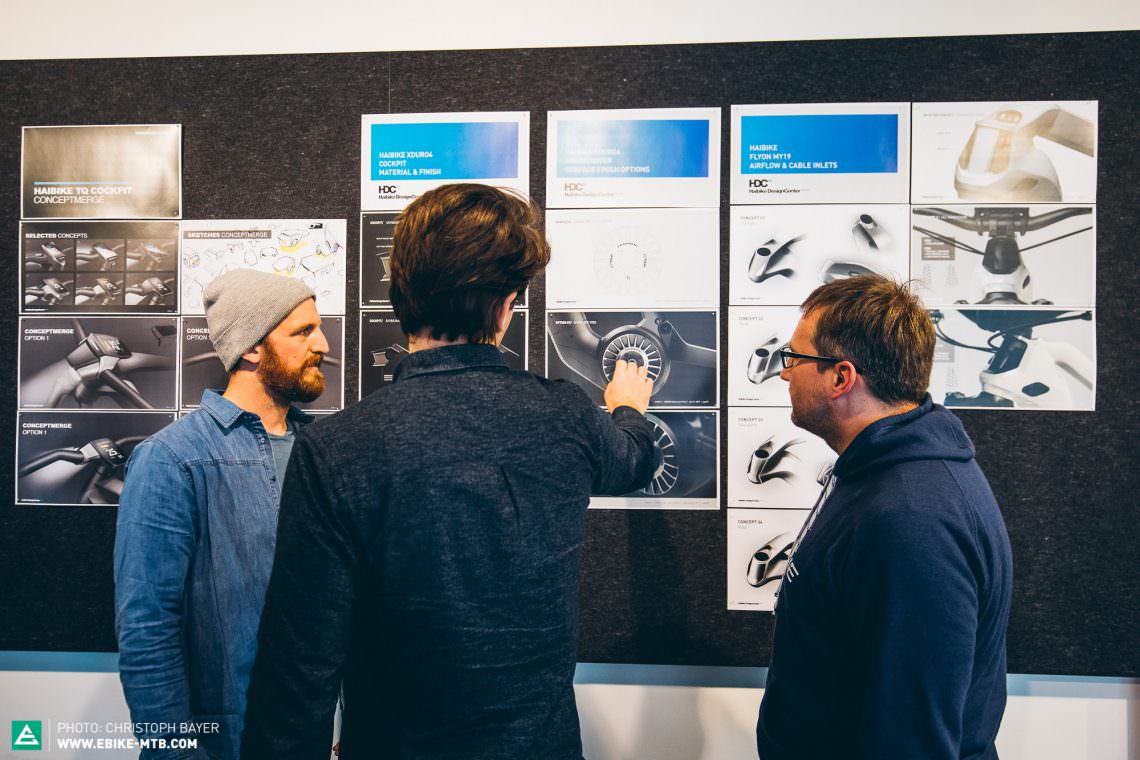
Haibike FLYON: sports car and pickup truck
Power has never really been a point of focus with eMTBs – but there was also little potential for brands to set themselves apart as they were all using the same motors. Yet, more power is very useful in many aspects of day-to-day life. With cars, more power usually means more fun (sports car) or it gives you the option to move larger and heavier things (pickup). With a whopping 120 Nm torque, the FLYON’s motor is around 25% more powerful than its closest competitors and you can clearly feel the difference on the trail. But more power means greedier battery consumption and more weight – there’s no getting around the physics. It’s difficult to lift the bike and undoubtedly the 25-plus kg weight sounds too heavy to many when they first hear it. But the weight is only a number. It says nothing about the actual handling of the bike. A Porsche is heavier than a Fiat 500, but it’s still a lot faster. The team at Haibike wanted to make the weight feel inconsequential once you got the bike on the trail, adapting the motor’s power curve, the anti-squat of the rear suspension and the geometry to do so. It is the distribution of the weight that matters far more than the weight itself, as our first ride review discovered.
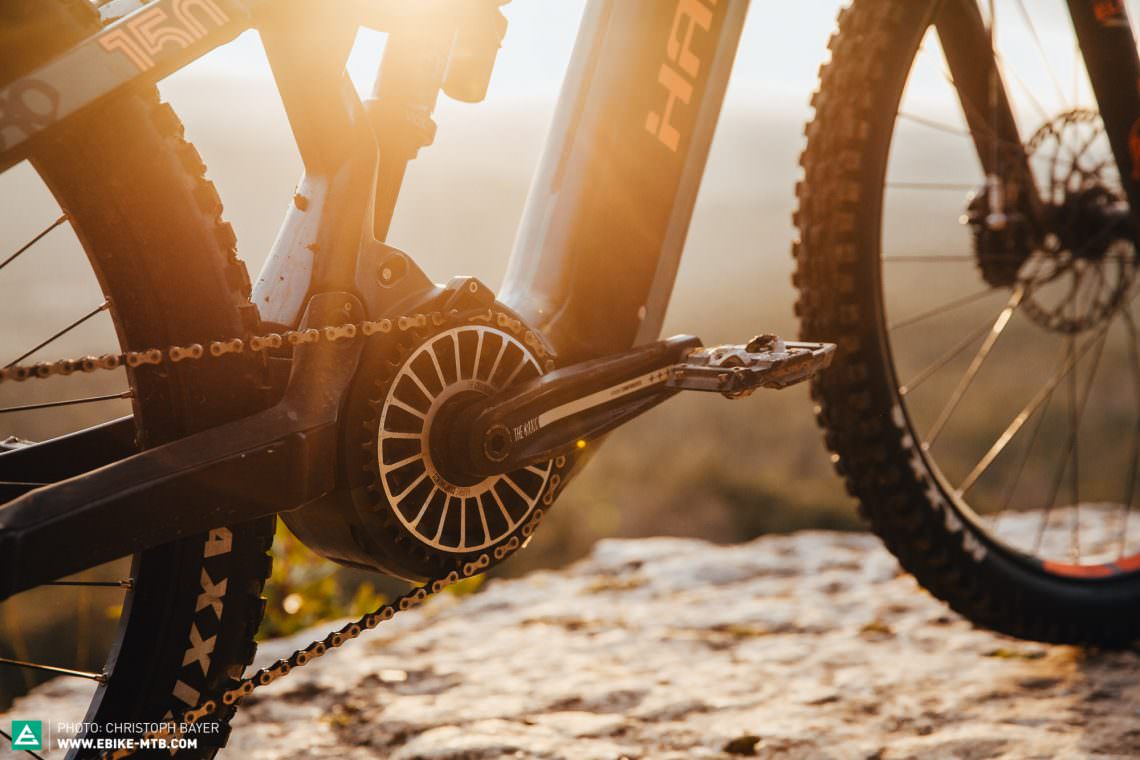
The design: making power visible
The proportions and design of the FLYON range of bikes stand out above the competition. Besides communicating and sharpening the look of the Haibike brand, it was important to the designers to emphasises the bike’s power. They’ve done so by drawing your attention to the motor, making it the central point of the design. Although it is seamlessly integrated it’s also a real eye-catcher. Elements such as the spoke design on the radiator cap that Haibike developed are reflected in other places such as the chainring or the headlight. The latter has been developed in-house and the arrangement of the LEDs gives the bike a unique light signature when heading towards you.
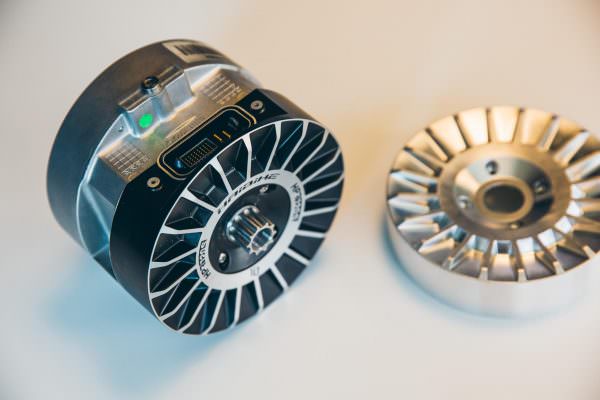
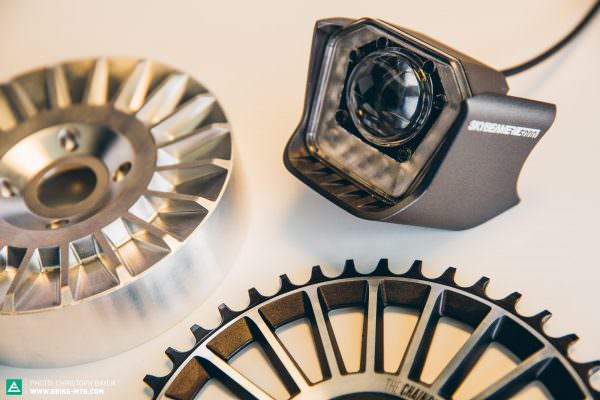
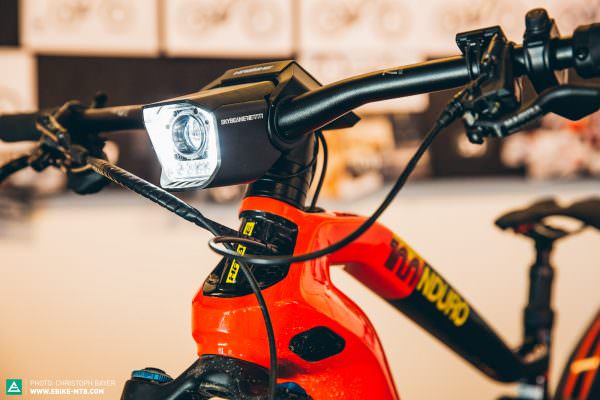
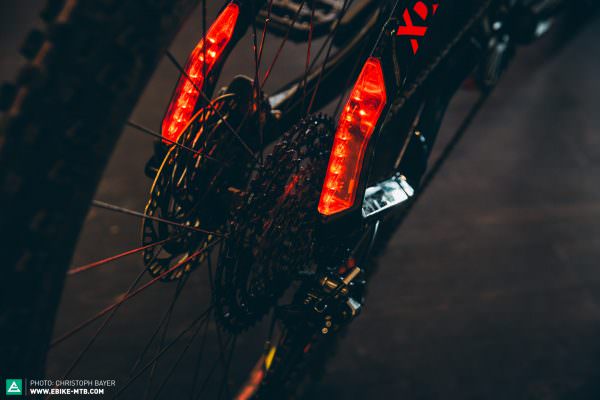
Special design elements of the FLYON range
- The motor is the focal point, visually highlighted by a cover developed in-house.
- The spoke design is repeated several times throughout the bike.
- Oversized tubing makes the bike look more powerful.
- Despite its large volume, the down tube looks very slim.
- Signature Haibike design elements such as the kink in the top tube have been retained.
- The LED pattern in the headlight makes it easily recognisable.
- The unique shape of the head tube contributes to the Haibike’s signature look.
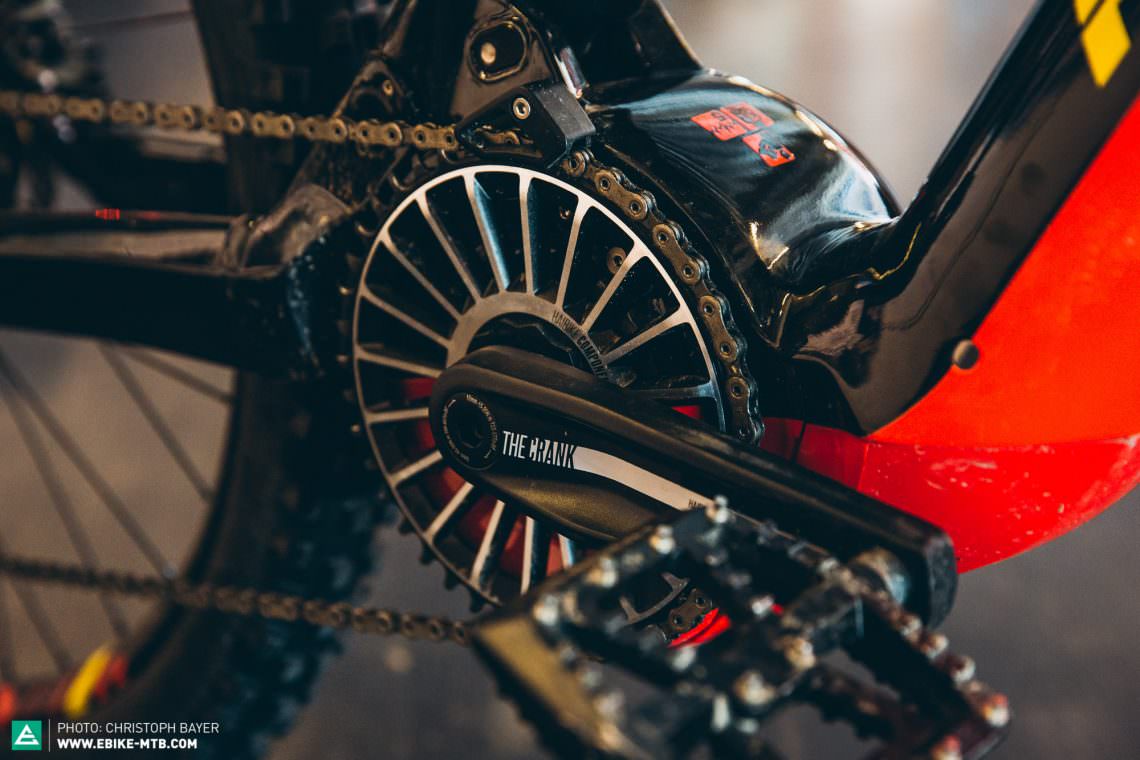
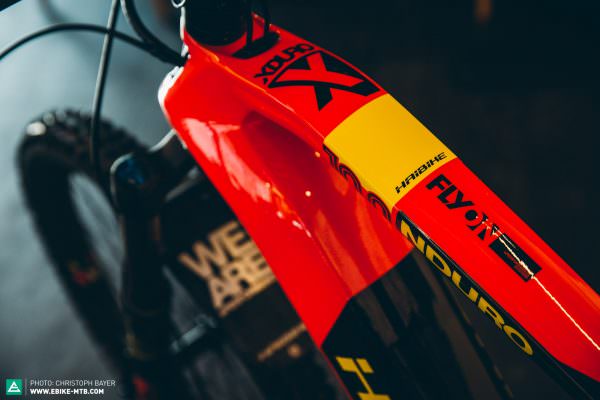
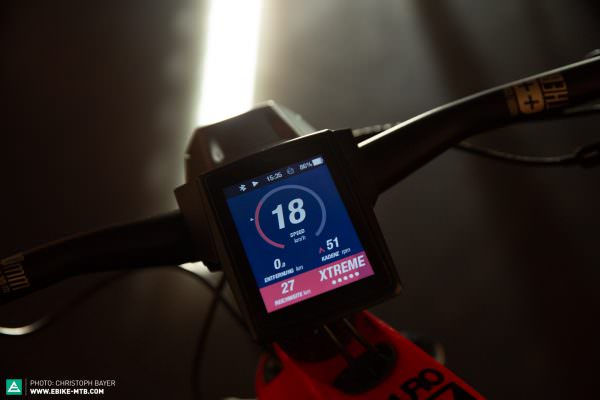
Find and explore new possibilities
The power of the FLYON range of bikes doesn’t only make them a lot more fun to ride, it also opens up completely new opportunities in day-to-day life. However, it’s up to you to recognize this potential and explore it. With its powerful motor, the bike is destined to pull a trailer, so why not directly integrate a trailer hitch into the frame? It’s cleverly hidden when you don’t need it, but super handy when you do. If you’ve already got more than enough battery capacity to power the motor, why not add a light for visibility and night riding? That’s why the flagship models of the XDURO Nduro and the XDURO AllMtn come with the 5,000-lumen Skybeamer headlight and the two taillights as standard. For the remaining models, you can easily fit the light as a later upgrade – the necessary wiring is already in the frame.
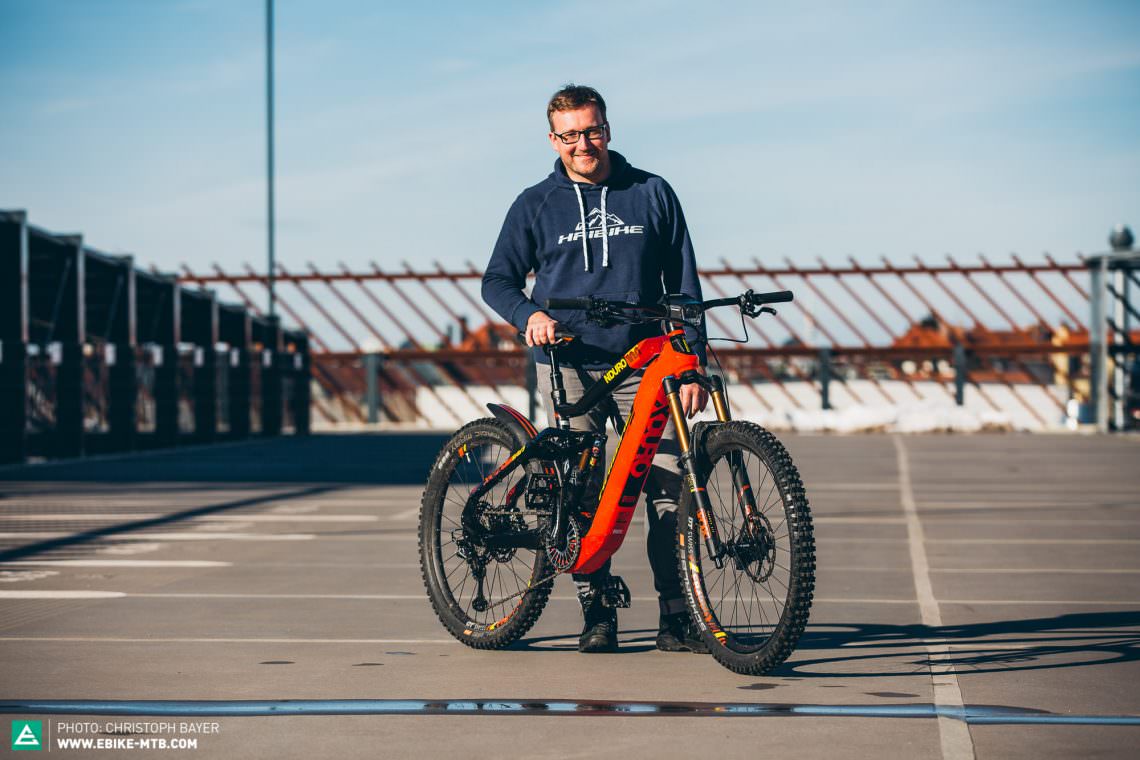
The technical highlights of the new FLYON range at a glance
- Completely redesigned carbon frame for more stiffness and modern geometry.
- A specially developed motor housing ensures optimal cooling and a unique look.
- Specially developed chainring for optimum power transmission.
- The Haibike-Remote promises intuitive operation.
- Completely in-house developed colour display with its own interface.
- Speed sensor disc for optimal motor control and to prevent de-restriction.
- Super bright Skybeamer headlight.
- StVZO (German road traffic regulations) compliant twin taillights.
- Modular Rail system on the down tube facilitates easy fitment of a bottle cage or tool.
- Integrated trailer hitch.
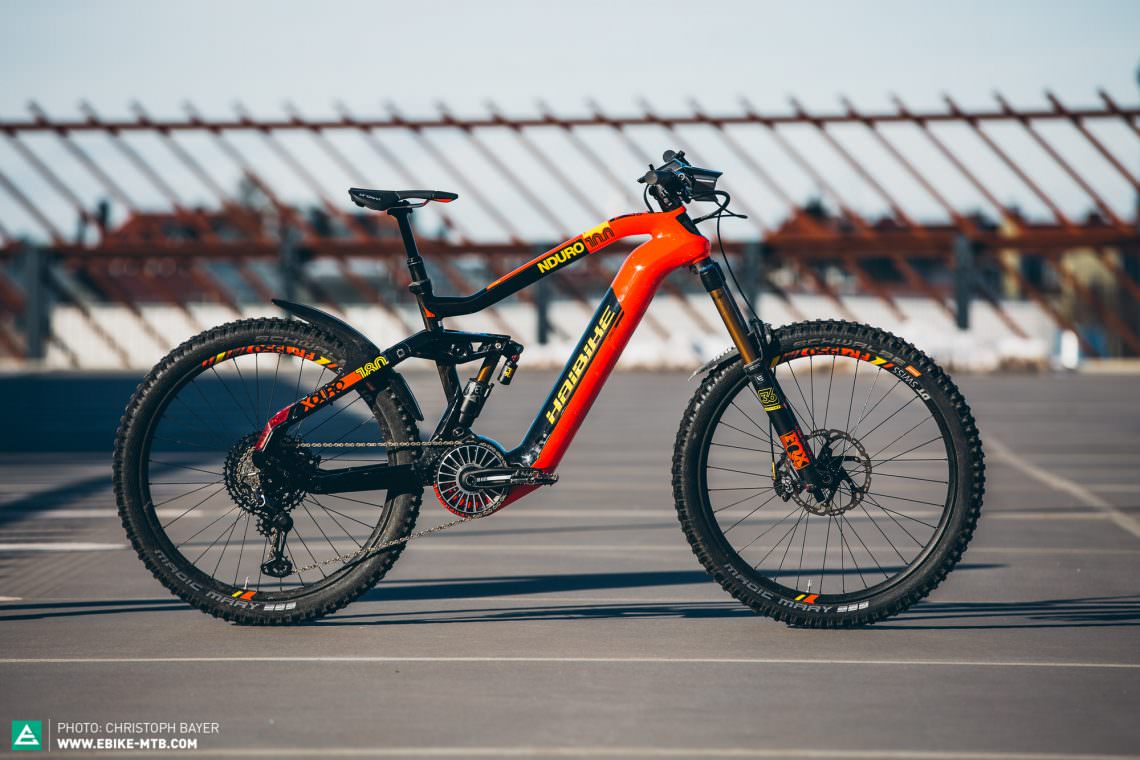
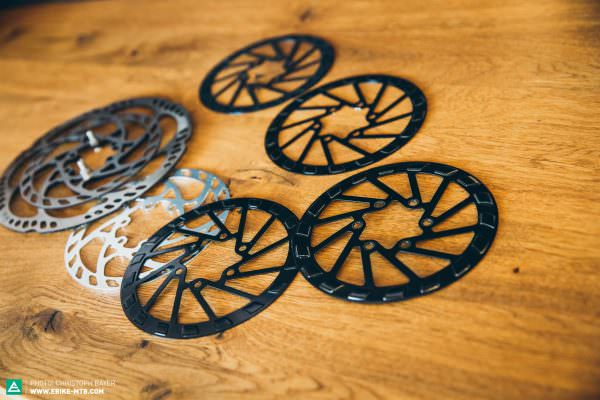
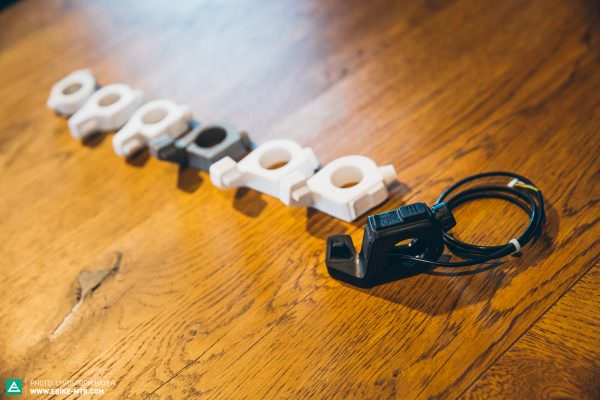
From frame manufacturer to vehicle manufacturer
Probably the biggest feature of the FLYON range is that Haibike no longer simply design frames and install a modular motor, battery and display. Instead, they are developing these components in cooperation with partners such as the German tech company TQ. Along with the motor, they have developed their own remote unit to go with the in-house developed display and its proprietary user interface. It not only looks good and offers a wealth of information but in the future, you will get automatic software updates along with the latest features. Haibike have also developed their own fast-charging charger as well as their own battery.
With FLYON, Haibike have taken a big step towards becoming a complete vehicle manufacturer in the mission to provide their customers with the best possible user experience. During the development of the current FLYON models, they’ve also acquired a wealth of know-how, which they can put to use in future developments. Haibike are the pioneer of eMTBing and have pushed the limits with their FLYON range once more – we’re curious to see what the next few years will bring! And oh, when you turn on the FLYON bikes, the Haibike logo now appears on the display. Just as Piers Spencer-Phillips originally wanted on his first day at work back in 2016.
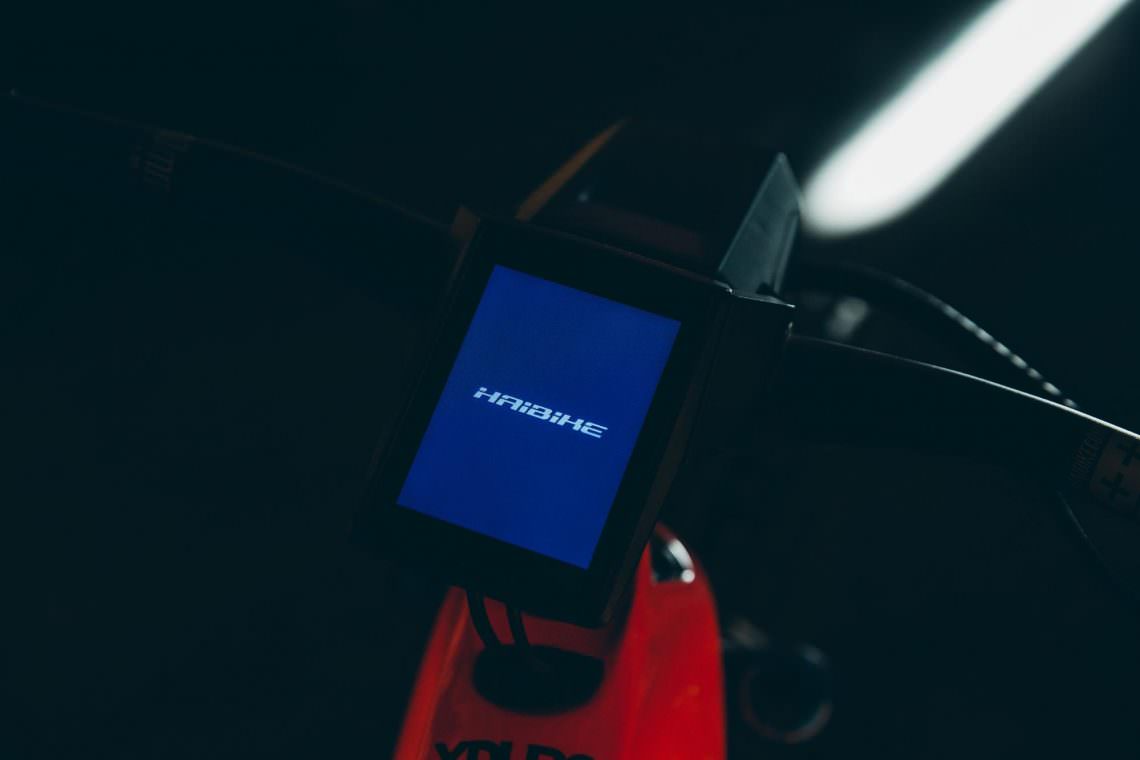
This article is from E-MOUNTAINBIKE issue #017
E-MOUNTAINBIKE Magazine is published in a digital app format in both English and German. Download the app for iOS or Android to read all articles on your tablet or smartphone. 100% free!

Did you enjoy this article? If so, we would be stoked if you decide to support us with a monthly contribution. By becoming a supporter of E-MOUNTAINBIKE, you will help secure a sustainable future for high-quality cycling journalism. Click here to learn more.
Words: Photos: Christoph Bayer, Piers Spencer-Phillip, Moritz Dittmar






